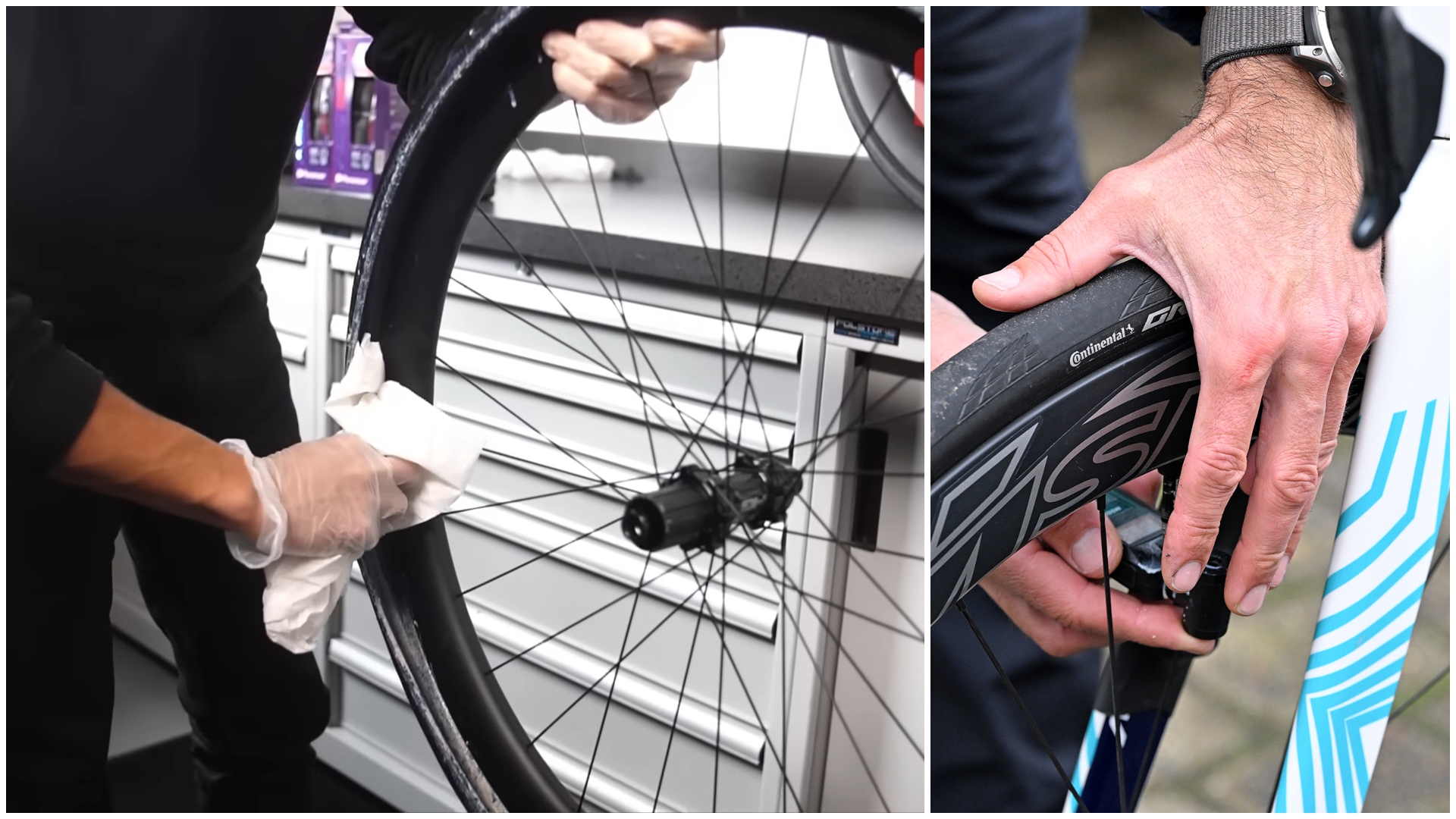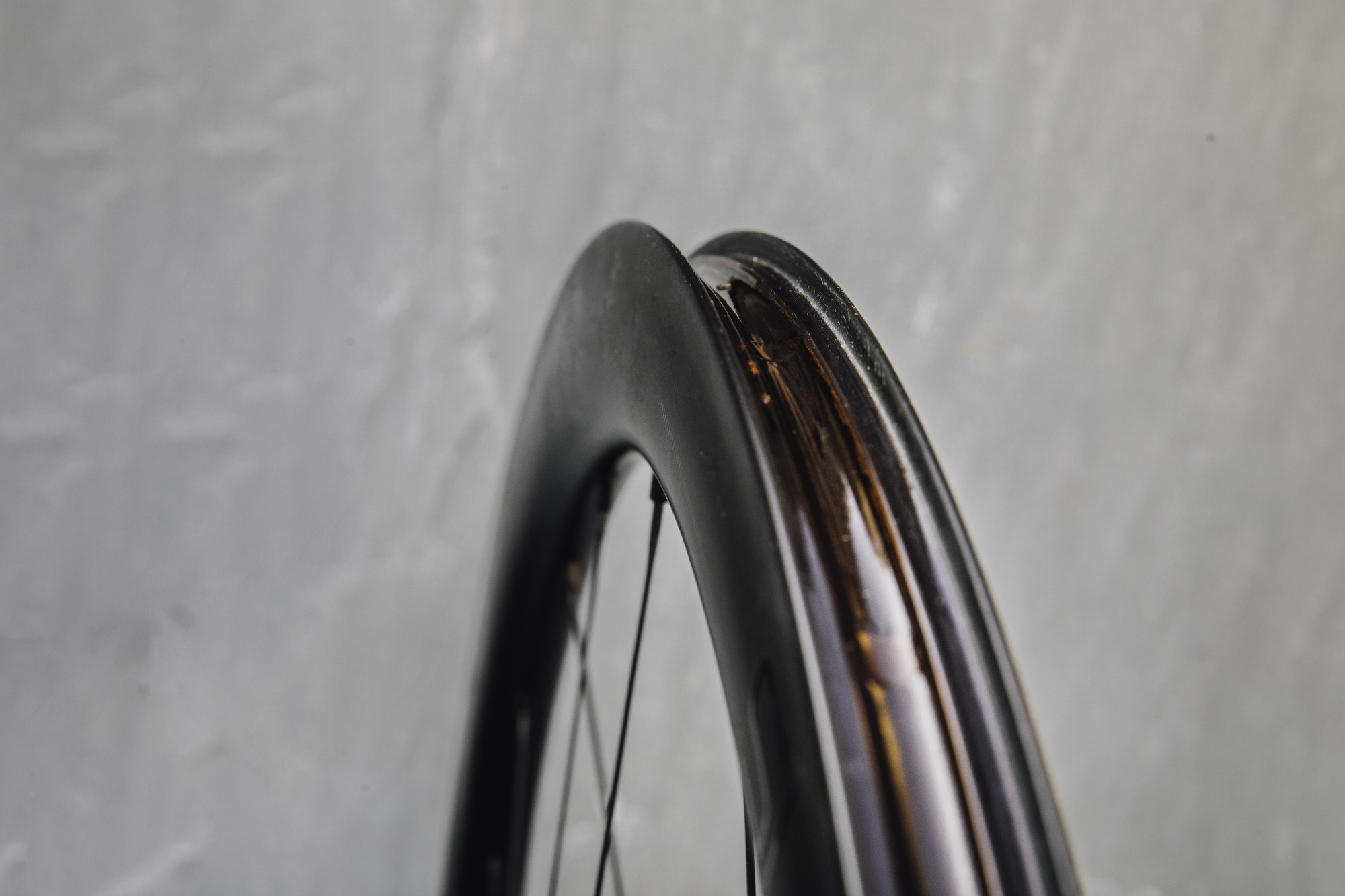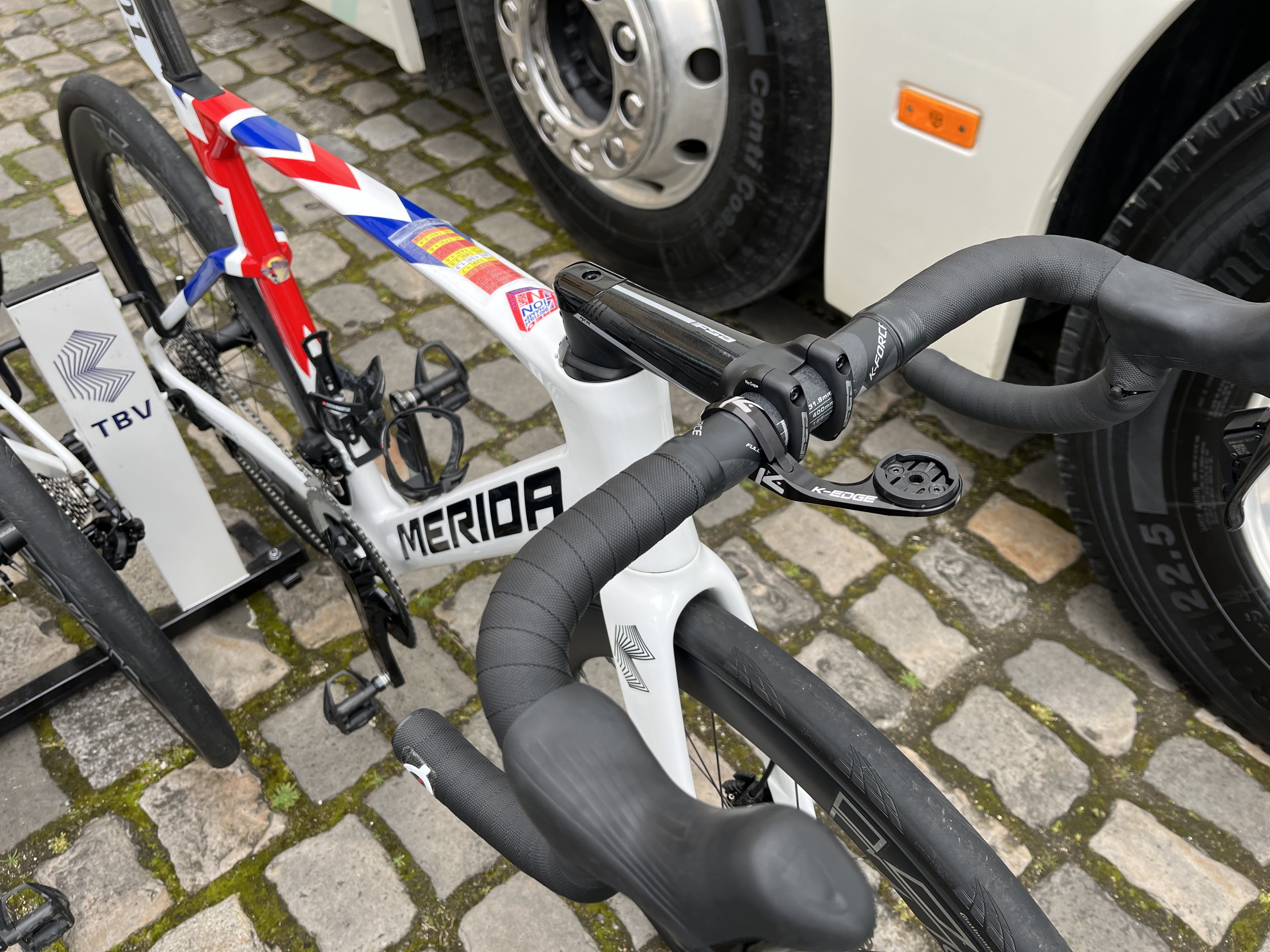
Tubeless set-ups have become increasingly common among road cyclists in recent years, with significant strides made in both wheel and tyre technology in the last half-decade.
However, debate over the safety of this option continues, particularly when the tubeless system in question runs on a hookless rim.
The catalyst for this debate was Thomas De Gendt’s rather harrowing crash at the UAE Tour. Shocking images of his bike revealed a 28mm Vittoria Corsa Speed tyre blown off the rim, prompting speculation that the hookless design of his Zipp 353 NSW wheel might be at fault.

In response, SRAM swiftly dispatched the implicated wheel to Chicago, where Zipp engineers scrutinized it to establish whether this was a hookless issue, a tyre pressure issue or, what mechanics initially reported, an external factor in the form of a rock on the road.
Their verdict? SRAM believes the blowout stemmed from road debris, which would, in theory, absolve any culpability.
While the media frenzy may have stirred some doubts among consumers, many seasoned mechanics assured us all that there is no cause for alarm. However, ensuring a smooth and secure tubeless experience requires adherence to proper guidelines and international standards - both from the consumer, and also manufacturers.
Gabriel Blythe is a freelance race mechanic, and head mechanic at Summertown Cycles in Oxford. Having inflated countless tubeless setups with varying tyre widths, rim types, and riding applications, we spoke with him to discover his best tips for a safe, trouble-free experience with tubeless tech.
Tubeless and hookless set ups: a brief explainer
Before we go any further, it would be prudent to re-cap the essential terms.
A tubeless set-up - as the name suggests - is a wheel/tyre duo which forgoes an inner tube. An airtight seal is created between the beads of the tyre, and the rim, whilst tubeless sealant is inserted into the tyre (either poured in directly before fitting, or via the valve), to seal any small holes. The nature of the system means that wheel and tyre manufacturers have been forced to focus on tolerances, since seemingly small deviations on either side can lead to failure.
A hookless rim is a rim profile which uses straight sides, and does not feature a bead hook on the rim. Hookless rims are designed to be used with tubeless set-ups, where the tubeless compatible tyres features a stiffer bead.
Rim and tyre manufacturers must adhere to guidelines set out by the European Tyre and Rim Technical Organisation (ETRTO) and International Organisation for Standardisation (ISO). However, it is the consumer's job to ensure that both components are being paired in accordance with these guidelines - for example, using the correct width tyre for the rim, and running the duo at a safe pressure for the pairing. The max recommended tyre pressure for a hookless rim is 72psi.
So - that's the basics. If you're going to run a tubeless set up, how can you ensure that it's safe?
Always re-tape rims
"The first thing I always suggest is retaping a rim from the factory. Nine times out of ten, the tape provided isn’t going to create a perfect seal on your rim, which will typically lead to a loss of tyre pressure, be that slow or fast," begins Blythe.
"At best, this can leave you constantly pumping up your tyres before every ride, and at worst it can cause mid-ride flats that will see you returning to using inner tubes!"
On a traditional wheel setup, the rim tape's function is purely to stop an inner tube from puncturing on the inside of the wheel. This means as long as the tape roughly covers the sharp burrs on the spoke hole cut-outs, the tape is doing its job. Tubeless setups, on the other hand, have to be airtight - albeit with the help of sealant. This means using special tubeless rim tape that totally seals the rim holes.

"The key point is that you want the tape to be the right width for your wheel," Blythe continues. "The main mistake that I see people make is they often set up tubeless wheels with tape that is too wide. While this may look like the rim is nicely covered, the likelihood is that air will start to escape around the corners of the rim.
"To combat this, opt for a rim tape that is just a millimetre or so narrower than the internal rim width of your wheels. When using a slightly narrower rim tape, the seal is on a nice flat surface, which will keep the system more reliably sealed."
Ensure your valve is airtight
Another part of the tubeless setup which can cause problems is the valve. Nowadays wheels often come supplied from the factory with specific tubeless valves designed for the specific wheelset, but even these, Gabriel explains, can come unstuck.
"The factory valves, even though they are designed with a particular rim shape in mind, don't always create a foolproof seal, and to combat this, I use an incredibly cheap hack in the form of two rubber O-rings."

"When fitting a tubeless valve, I always ensure that I put a small rubber O-ring on each side of the valve. This means sliding one ring around the valve before pushing it through the rim, before adding another beneath the lockring on the other side. This should help to keep the system sealed over longer periods of time - but bear in mind that you do have to get the right sized O-ring to best fit your lock ring and valve combination."
Of course, you might have to play around with finding the correct sized O-ring for the job, but this can be really worthwhile, as tubeless valves can be a common culprit for pesky slow punctures.
Ensure compatibility between tyre and rim
Now then, we come to the rather contentious issue that is tyre and wheel compatibility. Blythe's third tip is simple, but absolutely paramount to rider safety - always observe manufacturer guidance regarding tyre pressure and tyre widths.
"Nowadays, far more tyres are tubeless compatible, so it is much easier to find a combination that works for a given wheelset, however in the same vein, the emergence of hookless wheels has made things a little bit more tricky. "

When buying wheels, you'll notice that figures are given for the internal width, and the external width. The internal rim width - the distance between the two inner walls - is the one relevant to tyre compatibility, and it's increased in recent years; in the past, 17mm was the norm, whilst now, it's closer to 25mm.
A wider internal rim width will inflate the measured width of the tyre. For example, a 28mm tyre may actually measure as being 30mm on a wider rim. This in turn has an implication upon the recommended pressure, which is reduced as width increases.
The ETRTO lists compatible internal rim widths and tyre widths, as well as guidelines pressures.
Zipp's tyre pressure guide is a useful resource for checking your set-up. But, it's also important to ensure that the pressure gauge you're using is reliable, and that you're regularly checking how much air is in your tyres, pressure can be impacted by external factors such as temperature.
"Of course, this will sound obvious to many readers, but you’d be surprised how often we still see tubeless setups with tyres that are too narrow, or setup with far too much pressure for a hookless system. I always check what the minimum compatible tyre width is with the manufacturer, and observe ISO and ETRTO standards when setting up a wheelset with a new pair of tyres.
"Also, if a brand says that a wheelset is optimized for use with 30mm rather than 28mm tyres, then listen to them! You will enjoy a safer, comfier ride and likely one with fewer punctures too."
The topic of international standards is something we took a detailed dive into last year and, clearly, there is still work to be done when it comes to developing them. We put this to Patrick Brown, Design Engineer at Hunt wheels.
"Some of the current issues stem from the fact that the standard has changed several times over the last three years, making it very difficult for consumers to ensure that the recommendations given at purchase are still valid and up to date. And now riders (and teams) with 25 mm internal rims are left in an unenviable gray area with such a safety-critical interface.
"It would be helpful for consumers and manufacturers if standards remain the same for a period, allowing the technology to develop around the current structure. But, as the technology matures over a few years, it should be possible to revise them.
"Other than that, it is really important to follow the safety recommendations precisely. It may seem that a 28mm and 30mm tyre, or a 23mm vs 25mm internal width, is not that different, but they will have been developed and tested separately, for compatibility with the rims/tyres recommended under ETRTO. So, if you go outside of this, you will be using a combination that may not have been tested and shown to be safe."

The last point there really is key - these differences in tyre width, which may seem somewhat trivial, make a huge difference to safety. Blythe's common sense approach? "If in doubt, opt for wider tyres."
We say...
Currently, there are experts on both sides of the fence when it comes to the hookless rim debate.
Performance Engineer at Ineos Grenadiers, Dan Bigham - for example - wrote ominously on 'X': "History will not be kind to road hookless".
However, manufacturers are adamant that thorough testing has shown the systems to be safe. Following De Gendt's, Zipp released a statement in which it said: "Zipp does extensive testing, both to existing industry ratified standards as well as our own protocols based", it went on to say "these tests include both traditional impact tests for the rim as well as retention tests for specific tyre and rim combinations". The brand said that its internal protocols go "well beyond" any published standard.
Ultimately, choosing to adopt a hookless, tubeless set-up is a personal decision. What is clear, though, is that the ETRTO and ISO international standards must be adhered to. In instances where the international standards and brand advice differ, always opt for the more conservative recommendation - i.e. if a brand says the minimum tyre width should be 28mm and ETRTO recommends a 30mm, go for the wider option.
Always observe your tyre pressures with a pressure gauge you trust, and - if you are in any doubt - consult with your local bike shop.







